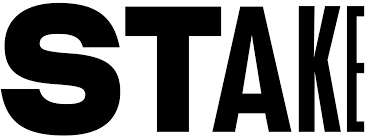If you’ve extra money each month that you want to invest, is putting more into your KiwiSaver better than investing using a share-trading app? Canstar explores.
Over the past few of years, investing in stocks and shares has become easy, thanks to apps such as Hatch, Sharesies and Stake. And cheap, as many apps didn’t charge transaction fees.
However, over recent months, many share trading platforms have revised their fee structures and introduced brokerage fees. Although they are small, they are charged every time you buy and sell, which can quickly add up. Especially if you’re only making small trades.
So, here at Canstar, we decided to investigate the costs of micro-investing compared to making extra employee contributions to your KiwiSaver.
Is KiwiSaver Better than Investing Using a Share-trading App?
If you are considering the merits of putting extra into your KiwiSaver over investing using a share-trading app, first define your investment goals.
If trading is just a bit of speculative fun, then KiwiSaver probably isn’t the right investment vehicle for you, as your funds will be locked away until you reach retirement age or make a first-home withdrawal.
But if you are planning for your long-term financial security, or to raise a deposit for a first home, KiwiSaver is a great investment tool.
Active KiwiSaver members must contribute a minimum of 3% of their salary. However, you can opt to increase your contribution rate to either 4%, 6%, 8%, or 10%.
For our fee comparisons, we’ll use the median monthly wage of $5152, and a 3% KiwiSaver contribution of $155.
So, if you want to invest a further $155 per month, a total of 6% of your salary, how do share-trading app fees compare to those charged by KiwiSaver providers?
Share-trading App Fees
Three of the most popular share-trading apps used by investors in New Zealand are Sharesies, Stake and Hatch. In the past Stake, charged no transaction fee, Sharesies charged 0.5% of the sum invested up to $3000, while Hatch has always charged US$3 per trade.
However, both Sharesies and Stake have recently announced new transaction fees:
Sharesies’ Fees
Sharesies has a transaction fee of 1.9%. Using our above example investment, if you invest $155 per month with Sharesies, it will cost you a $3 fee.
However, Sharesies does offer a $3 monthly membership that covers all transaction fees on $500 of buy and sell orders each month. So if you are making additional investments up to the $500 cap, this membership could provide better value.
Sharesies also caps its transaction fees:
- NZ$25 per order for NZ shares
- AU$15 for Australian shares
- US$5 for US shares
This means that the greater the sum you invest the less you’ll pay in fees. For example, 1.9% of $1316 is $25 – so the more you invest in NZ shares over $1316 in one hit, the smaller your transaction fee.
Total cost over 1 year
If you invest $155 per month over 1 year in NZ shares, it would cost you $36 ($3 x 12) + a further $25 at sale time (assuming you’ve not lost money and sell in one transaction) = $61
On your original investment (12 x $155 = $1860) this means you’d need to make $1921 to break even, a profit of 3.3%.
 Stake
Stake
US stock market trading app Stake has a brokerage fee of US$3 per trade under $30,000, which at time of writing equates to approx. NZ$4.60. On our $155 per month investment that works out roughly to a fee of 3%.
Total cost over 1 year
If you invest $155 per month over 1 year, it would cost you $55.20 ($4.60 x 12) + a further $4.60 at sale time (assuming you’ve not lost money and sell in one transaction) = $59.80.
On your original investment (12 x $155 = $1860) this means you’d need to make $1919.80 to break even, a profit of 3.2%.
But hold on! Because Stake invests in the US market, you have to pay an extra 1% FX fee on all deposits and withdrawals when transferring your money between US and NZ currencies. This means you’ll need to make at least 5% profit on your investment to break even … and that’s not taking into account any fluctuations in the dollar, which could weigh against you when it comes time to cash in your US$ investments to NZ$ (see FX fees below).
 Hatch
Hatch
Hatch has always had a transaction fee of US$3 per trade (up to 300 shares), which at time of writing equates to approx. NZ$4.60. On our $155 per month investment that works out roughly to a fee of 3%.
Total cost over 1 year
If you invest $155 per month over 1 year, it would cost you $55.20 ($4.60 x 12) + a further $4.60 at sale time (assuming you’ve not lost money and sell in one transaction) = $59.80.
On your original investment (12 x $155 = $1860) this means you’d need to make $1919.80 to break even, a profit of 3.2%.
But, in addition, because Stake also invests in the US market, you have to pay an extra 0.5% FX fee on deposit and withdrawal when transferring your money between NZ$ and US$.
This means you’ll need to make at least 4.2% profit on your investment to break even … and, again, that’s not taking into account any fluctuations in the dollar.
FX fees: Beware the extra costs
If you’re buying and selling US stocks, you’ll need to factor in not only the currency exchange fees charged by your share-trading app of choice, but also general fluctuations in the strength of the NZ dollar.
If you are selling NZ$ you want the strongest dollar possible. While if you’re buy NZ$ with a foreign currency, you want a weak Kiwi dollar. Looking at currency charts can help inform your decision to buy or sell at the right time.
For example, last October, the NZ$ bottomed out against the US dollar and NZ$1 was only worth US56c. However, since then the NZ$ has recovered and NZ$1 is now worth US65c.
Using our $155 example, if we had transferred that amount into US currency in October it would have bought us around US$87. If we transferred the US$87 back at today’s exchange rate, we would only get NZ$133.50 – a 14% loss on our original total due to the exchange rate alone.
Ultimately, if you’ve US$ or AU$ sitting in your trading account, the NZ$ is particularly strong, and you don’t need to repatriate the funds immediately, it could be worth sitting tight until you get more NZ$ bang for your US or AU buck!
KiwiSaver fees
KiwiSaver fees are a big deal. They differ quite considerably between KiwiSaver providers and funds. And they can have a significant effect on your overall KiwiSaver investments.
If you’re paying high fees for below average returns, it’s going to cost your dearly by the time you come to withdraw your funds. For not only are you paying more for your KiwiSaver, you’re losing years and years of compounded returns on the money you’re paying in fees.
However, for our simple KiwiSaver vs share-trading app fee comparison, we’ll keep it simple, and stick with Simplicity, which currently has some of the lowest fees of any provider on Canstar’s comparison tables:
KiwiSaver Lowest Fees
The comparison table below displays some of the products currently available on Canstar’s database for a KiwiSaver member with a balance of $20,000 in a Growth fund, sorted by total annual fee (lowest to highest), followed by company name (alphabetical) – some may have links to providers’ websites. Use Canstar’s superannuation comparison selector to view a wider range of super funds. Canstar may earn a fee for referrals.
Simplicity, the provider with the lowest fees on our database, charges a flat annual fee of 0.31% of KiwiSaver balances. That works out to an annual fee of $5.77 on our $155 per month ($1860 per annum) investment.
And you don’t need to apply any difficult maths to see how that stacks up against the investment app competition when it comes to the returns needed to just break even:
| Investment | Fees |
| Simplicity KiwiSaver* |
0.31% |
| Sharesies | 3.3%. |
| Hatch | 4.2% |
| Stake | 5% |
*Simplicity’s fee applies to all of its diversified investment funds, not just KiwiSaver.
→ Click here: High Returns or Low Fee KiwiSaver: Which is Better?
Finding the best KiwiSaver
Of course, all investments come with fees and risks. For example, Simplicity’s KiwiSaver fund is a passive fund that only tracks the market, meaning it can never outperform the market.
However, any shares you select and purchase through your app could, potentially, well outperform market-tracking funds and make you a small fortune. Or you could lose the lot.
But whatever your choice of investment, it always pays to do your homework and take into consideration long-term returns as well as fees. In fact, when looking at the best investment, it’s prudent to consider a whole range of factors.
And this is what Canstar’s expert research team does when it awards KiwiSaver providers our prestigious awards and star ratings. Using a sophisticated and unique ratings methodology, our team delves deep and compares the costs, features and performance of KiwiSaver funds. And, importantly, we don’t just look at short-term results.
KiwiSaver is intended as a long-term investment. And our research reflects this, rewarding providers for their average returns over the past five years. For our awards, each of the eligible KiwiSaver funds is rated across three main categories:
Performance
Most importantly, this covers annual returns, but it also looks at consistency of performance. This means how returns fluctuate year to year – whether they are consistent or vary wildly.
Features
Features include: the range of investment options offered by a KiwiSaver provider, the financial advice, tools and support provided, and ease of member access.
Price
Annual cost to members, including fees and total fund charges.
→ Learn more: Active Investing vs Passive: What it Means for your KiwiSaver
Compare KiwiSaver Providers with Canstar
If you’re looking for the best KiwiSaver, don’t just focus on fees and charges. Do your research, compare providers and look for the provider that best matches your appetite for risk and your long-term goals.
For example, the comparison table below displays some of the products currently available on Canstar’s database for a KiwiSaver member with a balance of $50,000 in an Aggressive fund, sorted by Star Rating (highest to lowest), followed by company name (alphabetical) – some products may have links to providers’ websites. Use Canstar’s KiwiSaver comparison selector to view a wider range of super funds. Canstar may earn a fee for referrals.
If you want to read more about our latest KiwiSaver Awards, click on the button below.
Compare KiwiSaver providers for free with Canstar!
About the author of this page
 This report was written by Canstar’s Editor, Bruce Pitchers. Bruce began his career writing about pop culture, and spent a decade in sports journalism. More recently, he’s applied his editing and writing skills to the world of finance and property. Prior to Canstar, he worked as a freelancer, including for The Australian Financial Review, the NZ Financial Markets Authority, and for real estate companies on both sides of the Tasman.
This report was written by Canstar’s Editor, Bruce Pitchers. Bruce began his career writing about pop culture, and spent a decade in sports journalism. More recently, he’s applied his editing and writing skills to the world of finance and property. Prior to Canstar, he worked as a freelancer, including for The Australian Financial Review, the NZ Financial Markets Authority, and for real estate companies on both sides of the Tasman.
Enjoy reading this article?
You can like us on Facebook and get social, or sign up to receive more news like this straight to your inbox.
By subscribing you agree to the Canstar Privacy Policy






Share this article